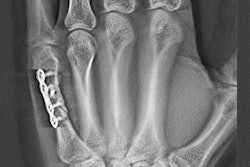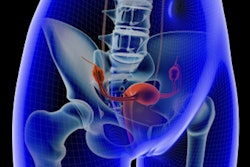Frame-rate conversion (FRC) is possible with fluoroscopy systems that use flat-panel digital detectors. It produces images with frame rates that are twice the x-ray pulse rate by interpolating two consecutive fluoroscopy images. For example, if the x-ray pulse rate is 6.25 pulses per second (p/sec), frame-rate conversion results in 12.5 frames per second.
The interpolation frames are created based on a motion-tracking technique that detects vectors in the motion of objects, the researchers explained. They hypothesized that FRC would reduce radiation dose in x-ray fluoroscopy without extending fluoroscopy time.
They tested FRC in 270 exams performed with and without the technique from May to December 2016. They compared the mean cumulative dose-area product (DAP) of fluoroscopy and the mean fluoroscopy time between the groups with FRC (n = 159) and without FRC (n = 111).
The researchers discovered a significant difference in mean cumulative fluoroscopy DAP between the groups, with FRC coming in at 2,647.99 mGy·cm2, while the DAP for the conventional group was 5,055.73 mGy·cm2 (p < 0.001). There was no statistically significant difference in mean fluoroscopy time between the groups.
Frame-rate conversion reduced the cumulative DAP of fluoroscopy by 52%, compared with the conventional method, with no difference in fluoroscopy time, they concluded.



















